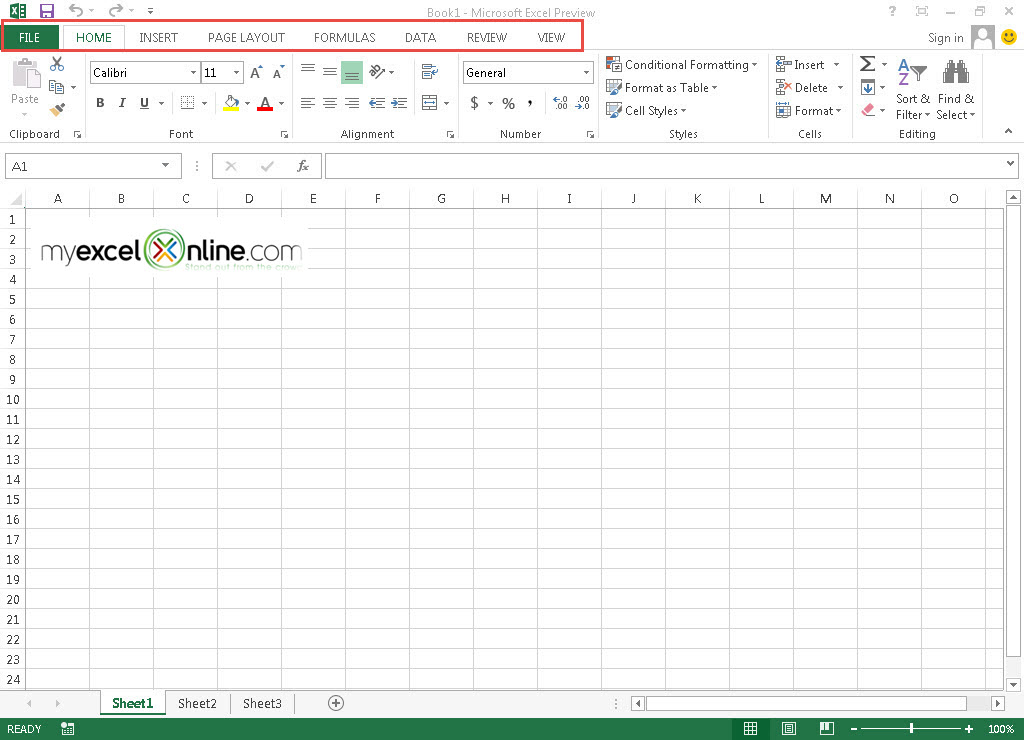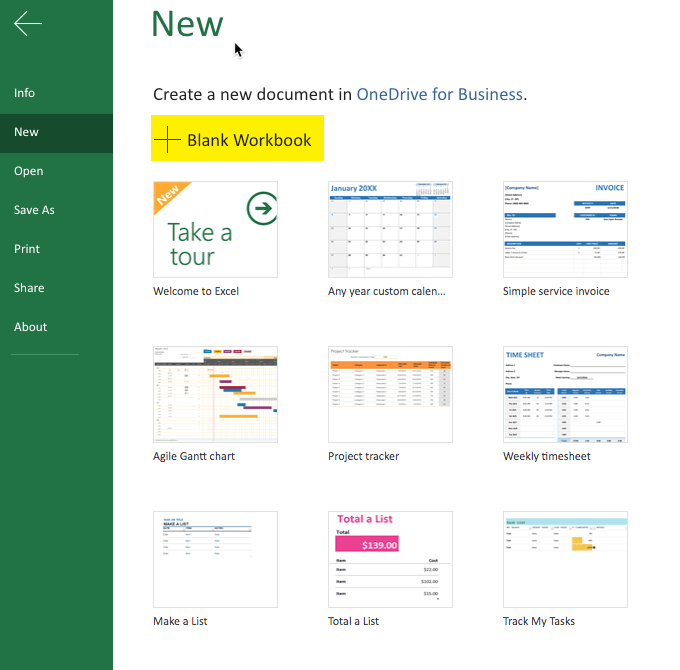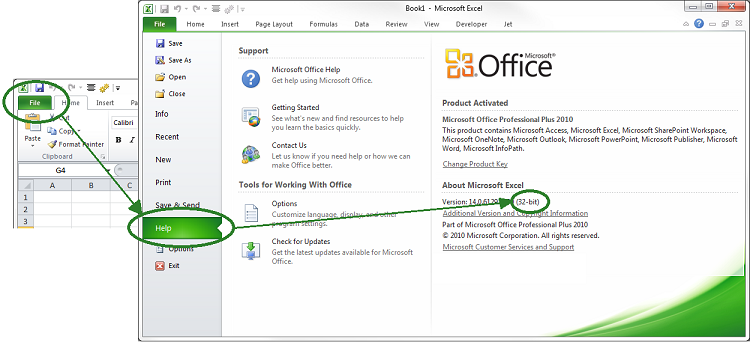At the time of this writing, there have been 30 versions of Excel that stretch from 1985 to the current year, running on three different operating systems. Each version might be slightly or significantly different than the last.
If you're working with Excel, just learning it, or troubleshooting an issue, it's important to know which version you are using. There are also some tips and tricks to upgrade versions, work between different versions, and deal with compatibility issues.
This piece should clear up any differences between the major releases of Excel, how file compatibility works between versions, and what you can do to upgrade. If you have more questions about Excel, a live chat session with Excelchat can provide the answers.
How Do I Check My Version of Excel? Here's how to determine your version and 32 or 64 bit in Excel 2010: Click the File button. Click the Help option on the left side menu. The Excel version will be listed under the Product Activated section. The bit version (32-bit or 64-bit) will be listed under the About Microsoft Excel section. This website uses cookies to improve your experience while you navigate through the website. Out of these cookies, the cookies that are categorized as necessary are stored on your browser as they are essential for the working of basic functionalities of the website.
Which Version Of Excel Do I Have Free
Learn about the different versions of Excel and how to upgrade your software.
Which Excel Version Do I Have?
Some of the major Excel versions that you'll probably run across include Excel 2003, 2007, 2010, 2013, 2016, and Excel365. But, which version are you currently working with? Depending on your version, here are the actions to take:
- In Excel 2003, go to the Help tab, and click on About Microsoft Excel.
- In Excel 2007, click on the rounded Microsoft icon in the top left corner, and click on Excel options > Resources > About.
- In Excel 2010, click on File > Help > About Microsoft Excel.
- In Excel versions 2013 and 2016, go to File > Account > About Excel.
About the Different Excel Versions
There are too many versions of Excel to list and outline, but here are some of the major releases and what you need to know.
- Excel 2003. This was the first version of Excel to offer tables and the first to have the 'WIMP' (Windows, Icons, Menus, Point) interface. It was released for both Windows and Mac operating systems.
- Excel 2007. This release was only provided for Windows and it was the first Excel version to have the Ribbon interface. It also changed the file format from .xls to .xlsm and .xlsx files. This expanded the number of rows that a file could hold to 1 million and improved file security.
- Excel 2010. This version was also only released for Windows. Some of the new features included Ribbon customizations, multi-threading support, and sparklines.
- Excel 2013. This version was only available for Windows and features included Slicers, Flash Fill, and dozens of new functions.
- Excel 2016. This version was released for both Windows and Mac, and it includes regular feature updates released online.
- Excel365. This is a subscription-based version of Excel 2016 that is 100% online and regularly updated. You don't need to do anything to make this happen.
How to Update Excel
If you have an older version of Excel and want to update it, how you do this will depend on which version you are currently running. Support has ended for Office 2003 and 2007, so it would be a good idea to buy and install the latest version.
If you have Excel 2010, go to File > Help > Check for Updates. If there are updates available, choose Install Updates.
If you have Excel 2013, go to File > Account. Choose Update Options under Product Information. Select Enable Updates. Click Update Now to check for and install any updates.
Which Version Of Excel Do I Have Test
How to Use Excel Files Created from Earlier Versions of Excel
Once you've installed a new version of Excel or upgraded, you might want to know how this is going to impact your existing files. When you have files that were created in an earlier version of Excel, backward compatibility will work in various ways:
- Use compatibility mode. Compatibility Mode allows you to open and work with Excel files that were created in earlier versions than the one you have. However, this isn't available for Excel 2007 files.
- Download a file converter. You can use a file converter to download and open Excel files in earlier versions of Excel.
Versions 2010 and later of Excel allow you to open files that were created in 97-2003 versions in compatibility mode. This should be automatic. However, any new features that were created in Excel after the file was created will not be available in this mode.
If you don't want to work on a workbook in compatibility mode, you have the option to convert the file to a format that is consistent with the new version of Excel.
If you have an Excel file that is from Excel 97-2003 and you try to open it in a later version, you might be prompted to 'convert' the file. Assuming the file is in .xls format, and you don't plan to work on it in that format again in the future, you can convert it to an XML format (.xlsx, .xltm, .xlsb, .xltx, .xlsm).
After the conversion, you'll have access to the new features and functions of your current Excel version. To convert a workbook, take the steps:
- Open the workbook (this will happen in compatibility mode).
- Go to File > Info > Compatibility Mode > Convert.
- Click OK.
If you want to have copies of the old file format and convert to the new file format, simply go to File > Save As. Keep the same file name if you wish but choose a new extension under Save as type. Click Save.
Hopefully, you found the information you were looking for regarding working with different versions of Excel. If you still need to troubleshoot a particular issue, or want one-on-one training in Excel, find out how Excelchat can help.
Our friendly Excel experts are available 24/7 to give you the assistance you need. Just open a live chat window to get started. Your first session is always free.
How to find the version of Excel you are using now?
In some cases, you may need to know the version information of Excel you are using. In this article, we will show you methods of looking for the version information of your Excel.
Find the version of Excel 2013/2016
Find the version of Excel 2010
Find the version of Excel 2007
Fine the Excel version with VBA code
Find the version of Excel 2013/2016
You can do as follows to find the version of Excel 2013/2016.
1. Click File > Account > About Excel. See screenshot:
2. Then you will find out your Excel version in the About Microsoft Excel dialog box.
Find the version of Excel 2010


For Excel 2010, please do as follows.
1. Click File > Help. Then you can see the Excel version is displaying in the About Microsoft Excel section. See screenshot:

Find the version of Excel 2007
1. Click the Office button > Excel Options.
2. In the Excel Options dialog box, click Resources in left pane, then you can see the Excel version in the about Microsoft Office Excel 2007 section. See screenshot:

Fine the Excel version with VBA code
Besides the above methods, you can also find Excel version with VBA code.
1. Press Alt +F11 to open the Microsoft Basic for Applications window.
2. Then click Insert > Module. See screenshot:
3. Copy and paste the below VBA code into the Module window, and then press the F5 key to run the code.
VBA code: find Excel version
4. Then a Microsoft Excel dialog box pops up with the version number displaying.
Related articles:
The Best Office Productivity Tools
Kutools for Excel Solves Most of Your Problems, and Increases Your Productivity by 80%
- Reuse: Quickly insert complex formulas, charts and anything that you have used before; Encrypt Cells with password; Create Mailing List and send emails...
- Super Formula Bar (easily edit multiple lines of text and formula); Reading Layout (easily read and edit large numbers of cells); Paste to Filtered Range...
- Merge Cells/Rows/Columns without losing Data; Split Cells Content; Combine Duplicate Rows/Columns... Prevent Duplicate Cells; Compare Ranges...
- Select Duplicate or Unique Rows; Select Blank Rows (all cells are empty); Super Find and Fuzzy Find in Many Workbooks; Random Select...
- Exact Copy Multiple Cells without changing formula reference; Auto Create References to Multiple Sheets; Insert Bullets, Check Boxes and more...
- Extract Text, Add Text, Remove by Position, Remove Space; Create and Print Paging Subtotals; Convert Between Cells Content and Comments...
- Super Filter (save and apply filter schemes to other sheets); Advanced Sort by month/week/day, frequency and more; Special Filter by bold, italic...
- Combine Workbooks and WorkSheets; Merge Tables based on key columns; Split Data into Multiple Sheets; Batch Convert xls, xlsx and PDF...
- More than 300 powerful features. Supports Office/Excel 2007-2019 and 365. Supports all languages. Easy deploying in your enterprise or organization. Full features 30-day free trial. 60-day money back guarantee.
Office Tab Brings Tabbed interface to Office, and Make Your Work Much Easier
- Enable tabbed editing and reading in Word, Excel, PowerPoint, Publisher, Access, Visio and Project.
- Open and create multiple documents in new tabs of the same window, rather than in new windows.
- Increases your productivity by 50%, and reduces hundreds of mouse clicks for you every day!

For Excel 2010, please do as follows.
1. Click File > Help. Then you can see the Excel version is displaying in the About Microsoft Excel section. See screenshot:
Find the version of Excel 2007
1. Click the Office button > Excel Options.
2. In the Excel Options dialog box, click Resources in left pane, then you can see the Excel version in the about Microsoft Office Excel 2007 section. See screenshot:
Fine the Excel version with VBA code
Besides the above methods, you can also find Excel version with VBA code.
1. Press Alt +F11 to open the Microsoft Basic for Applications window.
2. Then click Insert > Module. See screenshot:
3. Copy and paste the below VBA code into the Module window, and then press the F5 key to run the code.
VBA code: find Excel version
4. Then a Microsoft Excel dialog box pops up with the version number displaying.
Related articles:
The Best Office Productivity Tools
Kutools for Excel Solves Most of Your Problems, and Increases Your Productivity by 80%
- Reuse: Quickly insert complex formulas, charts and anything that you have used before; Encrypt Cells with password; Create Mailing List and send emails...
- Super Formula Bar (easily edit multiple lines of text and formula); Reading Layout (easily read and edit large numbers of cells); Paste to Filtered Range...
- Merge Cells/Rows/Columns without losing Data; Split Cells Content; Combine Duplicate Rows/Columns... Prevent Duplicate Cells; Compare Ranges...
- Select Duplicate or Unique Rows; Select Blank Rows (all cells are empty); Super Find and Fuzzy Find in Many Workbooks; Random Select...
- Exact Copy Multiple Cells without changing formula reference; Auto Create References to Multiple Sheets; Insert Bullets, Check Boxes and more...
- Extract Text, Add Text, Remove by Position, Remove Space; Create and Print Paging Subtotals; Convert Between Cells Content and Comments...
- Super Filter (save and apply filter schemes to other sheets); Advanced Sort by month/week/day, frequency and more; Special Filter by bold, italic...
- Combine Workbooks and WorkSheets; Merge Tables based on key columns; Split Data into Multiple Sheets; Batch Convert xls, xlsx and PDF...
- More than 300 powerful features. Supports Office/Excel 2007-2019 and 365. Supports all languages. Easy deploying in your enterprise or organization. Full features 30-day free trial. 60-day money back guarantee.
Office Tab Brings Tabbed interface to Office, and Make Your Work Much Easier
- Enable tabbed editing and reading in Word, Excel, PowerPoint, Publisher, Access, Visio and Project.
- Open and create multiple documents in new tabs of the same window, rather than in new windows.
- Increases your productivity by 50%, and reduces hundreds of mouse clicks for you every day!
- To post as a guest, your comment is unpublished.@John Sampson Exactly my thoughts !
- To post as a guest, your comment is unpublished.One needs to know which version one has in order to find out which version one has!
- To post as a guest, your comment is unpublished.Ma perchè fate le cose così complicate ? Io non conosco che versione ho , e dpvrei seguire 4 differenti modi per scoprirla A SECONDA di che versione ho ! Ma se so che metodo usare allora so la versione o no ???

